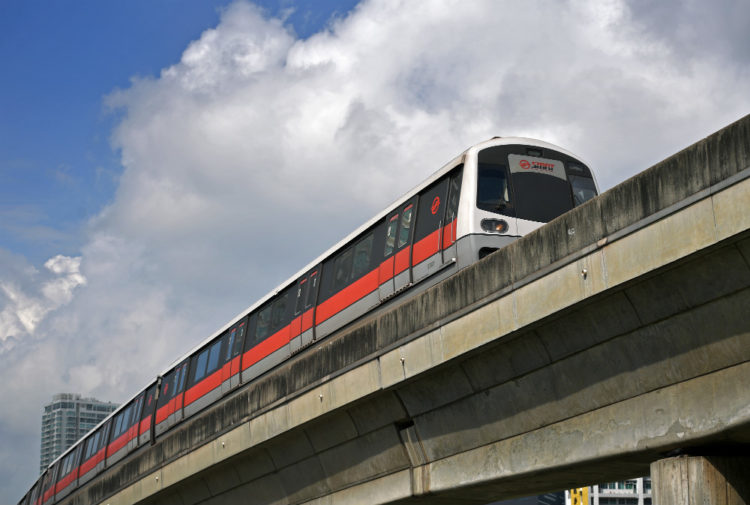
An SMRT train travelling along the tracks as it approaches Kallang MRT station on 19 January 2017.
The reliability of the North-South (NSL) and Circle MRT Lines (CCL) has seen a marked improvement in the year up to Q1, while the East-West Line (EWL) has maintained its current level of performance, said SMRT.
The rail operator, however, expects the reliability of the EWL to be stepped up as its ageing hardware – such as power rail and signalling system – are replaced.
SMRT’s chief executive Desmond Kuek said on Monday (April 24) that the EWL lags behind the NSL in its upgrading projects, but he is confident it will improve in performance when it catches up.
The NSL and EWL are the island’s oldest MRT lines and have been running for 30 years. Both lines are in the midst of an overhaul, but the NSL has generally been the first to undergo upgrading.
In the year ending Q1, the NSL clocked an average of 180,000km before a delay lasting more than 5 mins, bettering the 156,000km registered in the year ending Q4, 2016.
The EWL, however, maintained the same level of Mean Kilometre Between Failure (MKBF) – a key measurement of reliability – of 145,000 km for both periods.
The CCL improved its MKBF to 282,000km from 228,000km previously.
Mr Kuek said: “While these results are encouraging, we have still some way to go to be the best class in the world.”
SMRT said it targets to achieve an overall MKBF across its MRT network of more than 300,000km this year.
Mr Kuek added that SMRT will continue to push towards upgrading ageing rail assets, invest in the expertise of its technical staff, as well as use technology to better predict rail problems.
SMRT Trains managing director Lee Ling Wee said the ongoing trial of the NSL’s new signalling system, held on Sundays, will be gradually stepped up in the next few weeks.
From running trains at up to three-minute intervals – the usual for Sundays – trains will arrive at up to two minutes apart.
Mr Kuek added: “We don’t have the same passenger loading, but it will allow us to simulate, as closely as we can, the kind of train frequency, headways, we expect to see on a typical weekday.”
When fully operational, the new Communications-Based Train Control system will allow trains to arrive at up to 100 second intervals, instead of 120 seconds presently, thus boosting capacity. The Sunday tests, which started on April 16, is expected to last for two months.
Related story: SMRT now has more stringent checks
Related story: SMRT says disruptions on East-West line due to track circuits, not sleepers












